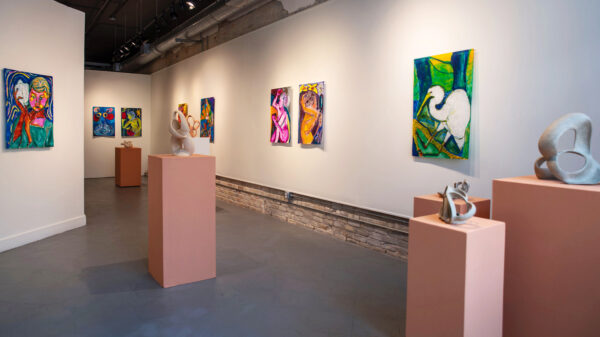Fortuitously, a torrential downpour graced Central Texas following a summer-long drought the weekend The Source opened at Northern-Southern in Austin. Water is a core tenet of The Source, serving as a metaphorical molecule that binds the work of featured Austin-based artists Evan Horn and Lauren Moya Ford, and is an essential element to the respective practice of each artist. On view until October 15, The Source stimulates contemplation on the springs that charge the creative impulse.
Though it is a partnered show, The Source is non-collaborative; Horn and Moya Ford did not produce the featured work to converge in tandem toward an overarching theme. In fact, Horn and Moya Ford only met for the first time during installation. Instead, their pairing is the brainchild of Northern-Southern Director, Phillip Niemeyer. Already familiar with each artist’s practice, Niemeyer brought them together by teasing out their material, stylistic, and conceptual parallels.
Horn, a ceramicist, constructs his work with clay sourced from Texas riverbeds. Their final forms remain loyal to their organic conception, twisting and curving in ways that evoke stalagmites. Moya Ford’s paintings flow to fruition from the tips of the colorful fountain ink pens from which she renders them. The inks bleed over the bespoke paper like rivers cutting through the earth, ultimately carving out their subjects, primarily women. Moya Ford captures the figures in their quiet moments, often administering acts of self-care, like bathing. Vessels are recurring symbols throughout her paintings, and Horn’s works contemporize the vessel in the ceramic tradition. The vessel motif in both artists’ work invokes the show’s namesakes.
The Source alludes to two mid-19th-century paintings of the same title that feature women and water. Jean-Auguste-Dominique Ingres’ La Source (1856) and Gustave Courbet’s The Source (1862). Ingres, a loyal Neoclassicist, renders his subject as statuesque. While leaning into contrapposto, she lifts a vessel over her left shoulder to empty its contents back into the spring that she stands upon. Her idealized nude figure indicates that she is an allegory.
By contrast, Courbet, ever the Realist, eschews idealism, instead showing an everyday woman reaching into a flowing spring to wash her naked body. With her back to the viewer, her body bends to complete the task rather than entice academicians. It is widely accepted that Courbet’s take on the scene was a subversive response to Ingres’, and together, the paintings represent phalangeal creative sourcing — for Ingres, the allegory, and for Courbet, the parody — that is now viewed as pluralism in Contemporary art. Following this lineage, and sharing symbols with its predecessors, Horn and Moya Ford’s work in The Source demonstrates the multitude of meanings that arise when considering the source of creativity.
As I walk through the door of Northern-Southern (tucked away off 5th Street, between Brazos and San Jacinto), I first encounter Horn’s The Source, a large clay bowl filled with water and placed on a pedestal in the entryway. Moya Ford’s Agua de Burela hangs on the wall directly to the left, depicting an extended arm grasping a vessel and filling it with water from a spout that extends out of frame. The placement of these works at the beginning of the show establishes the thematic prominence of water, which is essential to both artists’ processes.
In Horn’s ceramic practice, the water present in the clay — absorbed from the riverbeds where he sources it — allows malleability needed to manipulate its form. Moya Ford paints with water-soluble fountain pen inks on handmade papers; with these, water is a necessary ingredient that she uses to dilute colors, dampen the paper, and determine the ink’s movement and saturation. The adaptability of water plays a crucial role in shaping the physical states of the work of both artists. Conceptually, this adaptability is also indicative of the mental state that both Horn and Moya Ford channel at the work table.
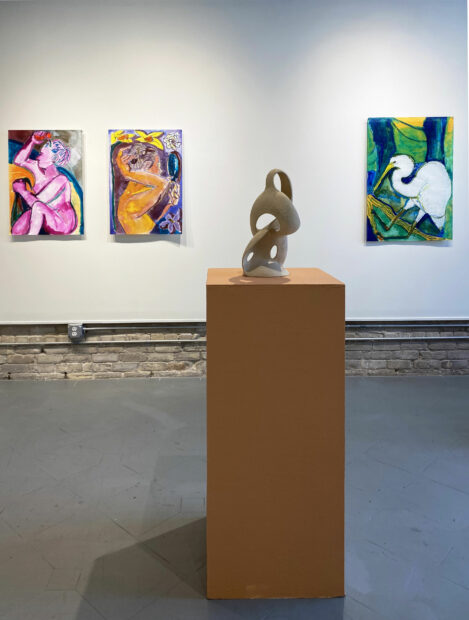
From left: Lauren Moya Ford, “El Baño and My Own Mirror”; Evan Horn, “Love’s Mirror”; Lauren Moya Ford, “Egret”; on view in “The Source” at Northern-Southern through October 15. Photo: Northern-Southern.
Veering right, toward the center of the space, Moya Ford’s El Baño and My Own Mirror each feature a woman, one bathing and the other gazing into a handheld mirror. They attend to themselves, their bending arms, buns coiling atop their heads, and curving outlines harmonizing with the cascading curvature of Horn’s Love’s Mirror, which is installed just beyond their places on the wall — a title synchronicity that is particularly satisfying considering the two artists were not in collaboration. The dynamic quality in all three works feels like a reflection of the artists’ headspace while creating, honing in on their own intuition, allowing for playfulness.
Both artists elect to make formal choices moment-to-moment in response to the autonomy of their materials. For Horn, this is like playing a game of physics, testing the clay’s balance and ability to hold form. For Moya Ford, this manifests in her vibrant use of non-local color and the stylization of natural forms to communicate sensations that she channels from her dreams, meditations, and other subconscious states. Horn’s work is also birthed from liminal spaces, posited between simplicity and complexity, appearing as free forms that are actually highly structured. Though their material surfaces are simplistic, beneath each piece is a Möbius strip base, a five-dimensional mathematical object, upon which each work is constructed. The liminal undertones in The Source, again, allude to fluidity; a meandering between two states.
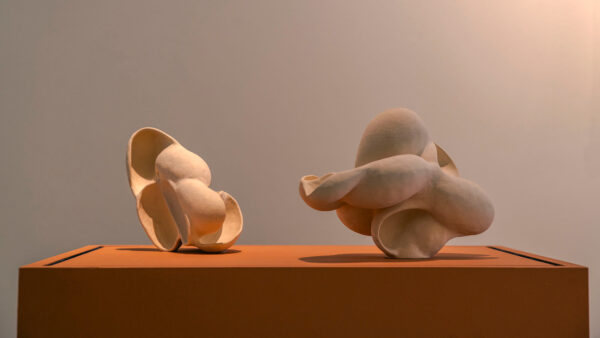
Evan Horn, “Ratio and Motif” and “Pressure Not Tension,” on view in “The Source” at Northern-Southern through October 15. Photo: Charles Heppner.
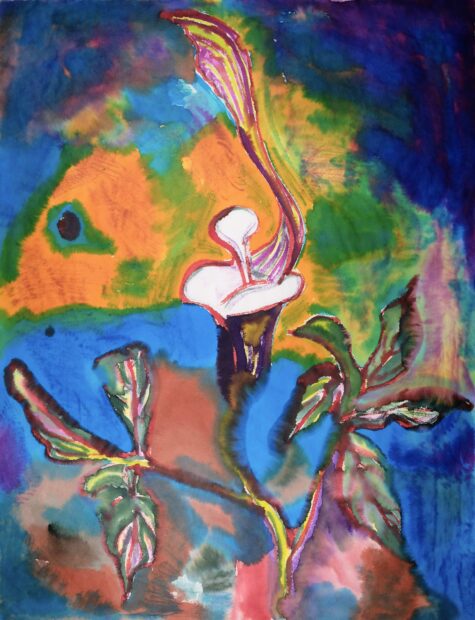
Lauren Moya Ford, “First Sighting (Yokimochisou),” on view in “The Source” at Northern-Southern through October 15. Photo: Lauren Moya Ford.
This liminality translates as abstraction for Horn and stylization for Moya Ford, prompting reflection on their stylistic relationship to functionality. Horn’s ceramic practice honors the medium’s long-standing tradition. Pottery, specifically the vessel, is often considered the first artwork made out of necessity to store food and water. Many of Horn’s pieces clearly nod to this lineage, like The Source in the entryway of the gallery. While solving physical problems by coordinating with balance, proportion, distribution of materials, and gravity, Horn makes practical decisions to produce strongly abstracted objects, making the viewing experience an exercise in mental gymnastics. The vessels are biomorphic, like fossils abstracted by their own index. The clay bellows and contracts, creating pockets of space that are deceptive in their functionality and blur notions of interior and exterior. This encourages us, as viewers, to slow down, turn inward, and meditate on the mental puzzle the artist has put forth.
Similarly, Moya Ford’s paintings are also products of cognitive processing. Discussing her work through the lens of her personal history, Moya Ford describes her endeavor as painting the healing journey — spiritual and medical. In an effort to process these transformations, she paints rapidly (which her liquid medium is conducive to), resulting in a prolific practice. Though the series may have autobiographical roots, Moya Ford extends her work to the collective by reframing archetypes of women. Not only are the women void of figurative idealism, but the stylization and bright color palette convey the feeling of womanhood — not one where we’re ogled at in the name of allegory (I’m looking at you, Ingres), but where we romanticize our everyday lives: talking, swimming, making, and caring for our bodies, which, like water, are vessels of life.
The subjects are birthed from streams of rust orange, deep purple, electric blue, Kelly green, and blushing pink. The hues vibrate next to each other, producing that sensation you get when lying under the sun and closing your eyes to see rainbows of color pulsing behind your lids. The paintings communicate an exuberance in mundanity. Moya Ford captures snapshots of life, stylizing its forms and enhancing its colors to convey the energy and sentiment attached to those experiences in the same way that our memories further abstract their conceptions with each reminisce. Organic in gesture and in subject, the paintings reify how it feels to become spiritually attuned to the humble blessing in life, like a spring or a seashell, that play a small part in making life possible. The paintings and ceramics on view in The Source may be non-functioning objects in a practical sense, but they are functioning in the way that art has and continues to do: processing personal, societal, and global transformations through art.
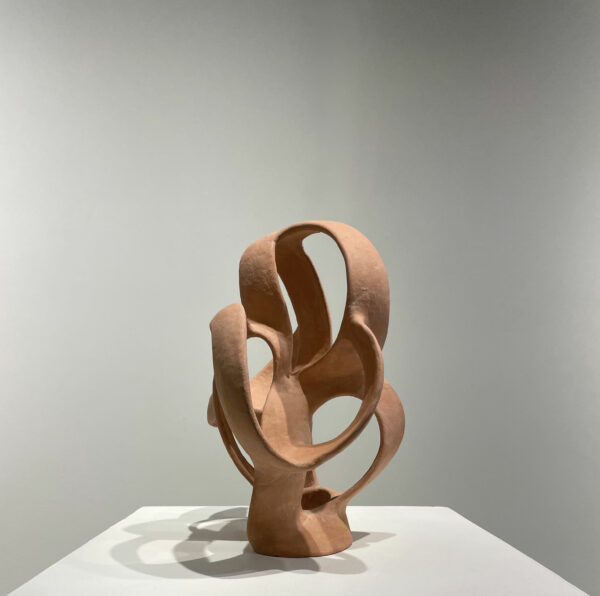
Evan Horn, “Body Knowledge,” on view in “The Source” at Northern-Southern through October 15. Photo: Northern-Southern.
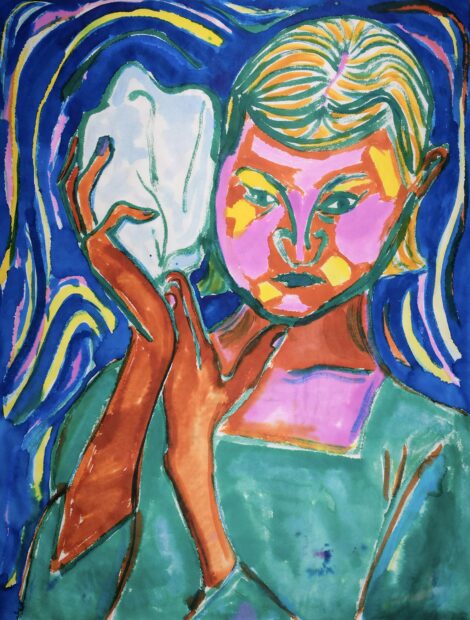
Lauren Moya Ford, “The Seashell (after Vega Tora Holström),” on view in “The Source” at Northern-Southern through October 15. Photo: Lauren Moya Ford.
While Texans were rejoicing in that late summer storm during The Source‘s opening, thousands of Libyans were grieving loved ones lost to deadly flooding. Of the unprecedented events confronting humanity, the climate crisis threatens the sustainability of all who rely upon Earth’s livability. I left Northern-Southern that night with lingering questions: What happens when the source overflows? Or stops flowing at all? The Source pours forth with hope that the creative spirit will endure.
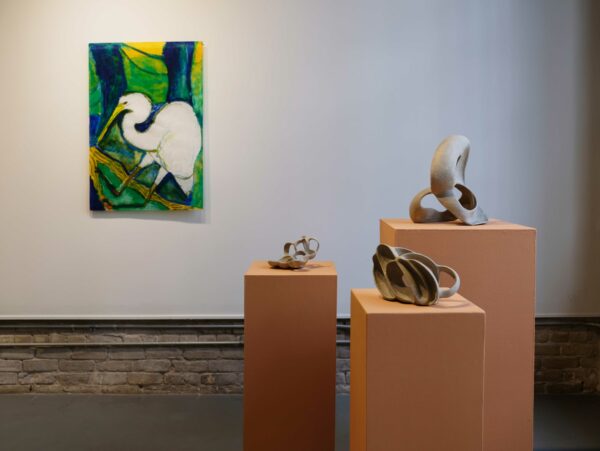
From Left: Lauren Moya Ford, “Egret”; Evan Horn, “The Vessel Implicit,” “Nature’s Yes,” and “The Physics of Turning Inward,” on view in “The Source” at Northern-Southern through October 15. Photo: Lauren Moya Ford.
The Source is on view through October 15 at at Northern-Southern in Austin.


